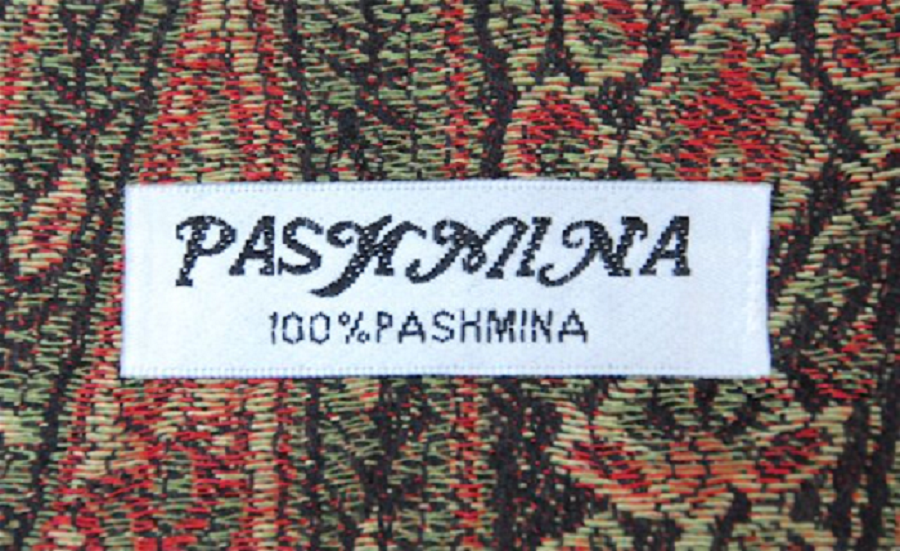Pashmina wraps are made of the best Cashmere fleece which comes from Ladakh. Changthang locale of Ladakh has an extraordinary assortment of goats, which develop Cashmere as down fiber. This down fiber is obtained in the Summer season and handled to make Pashmina items.
Unadulterated pashmina is a fairly gauzy, open wind, as the fiber can’t endure high pressure. The most well known pashmina texture is a 70% pashmina/30% silk mix, yet 50/50 is additionally normal. When we are going to buy the pashmina shawl we surely check the 100 pashmina label in the shawl that defines its purity. The 70/30 is firmly woven, has an exquisite sheen and window hangings pleasantly, yet is still very delicate and light-weight.

What do Pashmina Scarves Consist of?
Pashmina scarves are made of Cashmere fleece which is obtained from Ladakh. Here an outlandish intriguing goat develops Cashmere over its underside to endure freezing cold. This Wool is normally disposed of in summers by the goat. It is subsequently cleaned, turned, woven, and hand tailored into extravagant Pashmina scarves, cloaks, and other wrap extras.
Presently Figure Out How to Check Assuming Pashmina Cloak is Unique or Phony Prior to Getting One:
-
Really Take a Look at its Appearance:
Most cases a true piece will bear a matte appearance. In the event that it has a sheen, check the amount it is. Slight in sum is fine yet assuming a ton of it, you didn’t pick the right texture!
-
Search for the Distance Across:
The best grade ones are accessible for 14-15.5 microns. Purchase nothing over 19 microns for better quality. The lower is the micron count the lighter and milder will be the item.
-
Really Take a Look at the Weave :
An unadulterated cashmere pure pashmina shawl wrap will generally be woven on a hand-loom. Therefore, it will have a sporadic weave. Hold the cloak against light and the inconsistencies will effortlessly show.
-
Go for the Consumer Test:
Now you’ll basically need to put the texture piece on some ceramic or steel pot without covering it with top, you can likewise involve a microwave safe plate for that reason. Whenever you have put the texture piece on the plate, basically strike a match and let it consume.
You’ll need to see it consume and smell the scent as well as check the cinders with your fingertips. Assuming that you get a consumed hair sort of smell and the debris ends up being a fine material, it is bound to be unadulterated.
However, in the event that it smells the manner in which consumed leaves would do and there are greater flares consuming it up, uh oh you’ve been cheated, it is thick. Once more, assuming that it gives a vinegary scent or smell like consuming plastic, with the cinders framing little irregularity, it also is some unacceptable stuff. It tends to be acrylic or polyester.
Actually take a look at the utilization and the aspects: Dimensions are truly significant. The higher are the aspects the heftier will be the cost. Assuming anyone attempts to sell greater aspects at less expensive value, you are doubtlessly being cheated.
For wraps, a standard component of 36 by eighty inches is observed. Considering what is handled? Indeed, it is the strand of the texture woven together. At the point when various strands are utilized, you want to really look at the handle. 2-utilize utilizes 2 strands, 3-employes utilizes 3 strands, etc. Something makes the apparel thicker. For wraps, stoles, and scarves they generally keep it lower.
-
Play Out the Scouring Test:
This is the simplest test to really take a look at the credibility of the dress. You’ll just need to rub the stuff and you’ll be aware on the off chance that it is unadulterated or not.
Yet, you really want to know the rationale behind it to know how it functions. Thus, when you rub them, they give out flash.
You might see it in obscurity and it is very perceptible. What’s more, clothing with plastic material utilized in the making will go through a similar friction based electricity in drawing in hair or residue or a little molecule of some sort or another. At the point when you’ll rub your article of clothing it will show what it is. Assuming it is acrylic or polyester, you’ll hear the flash and on the off chance that it is plastic, it will draw in minuscule items.
-
Do the Pilling Test:
This is once more something simplest to do. You should simply check whether there is some pilling occurring with the item. Assuming an item is offering 100 percent texture you will track down a great deal of pilling on it after you carry it to utilize, this is a characteristic attribute of the texture however in the event that there is no pilling by any means, you’ve purchased a phony item.
Check for Glue:
Check assuming it has anything stuck on it. Just a phony material will accompany some sort of name or label stuck on it since it is absurd in any case. You can never stick anything on genuine cashmere. Stick won’t remain on it for a really long time.